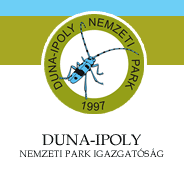| |
The operational area of the Danube-Ipoly National Park Directorate is in the crowded, central part of Hungary amidst dense infrastructure and industry. The Directorate handles nature protection and operational tasks in the Capital, Pest, Komárom-Esztergom and Fejér counties. Besides the Danube-Ipoly National Park, in the operational area of the Directorate there are 8 Protected Landscape Areas and 32 Nature Conservation Areas. Compared to the other regions of the country, the environmental threats here appear to be more serious - therefore the protection of the natural environment requires a great effort. At the same time the diversity and variety of natural values of the area is fascinating even today: from the protected mountain areas to the plains and water bodies.
Danube-Ipoly National Park, the ninth national park of Hungary established on 60 314 hectares in 1997, and includes the Pilis, Visegrád and Börzsöny Hills, the undisturbed sections of the Ipoly Valley as well as parts of the Szentendre Island. The rock-bed of the Pilis Hills stretching from Esztergom to Budapest is made up of limestone and dolomite. Because of the basic characteristics of limestone karst formation, the hills are exceptionally rich in caves. Therefore it is not surprising that most of the caves of the National Park can be found in the Pilis Hills.
|



